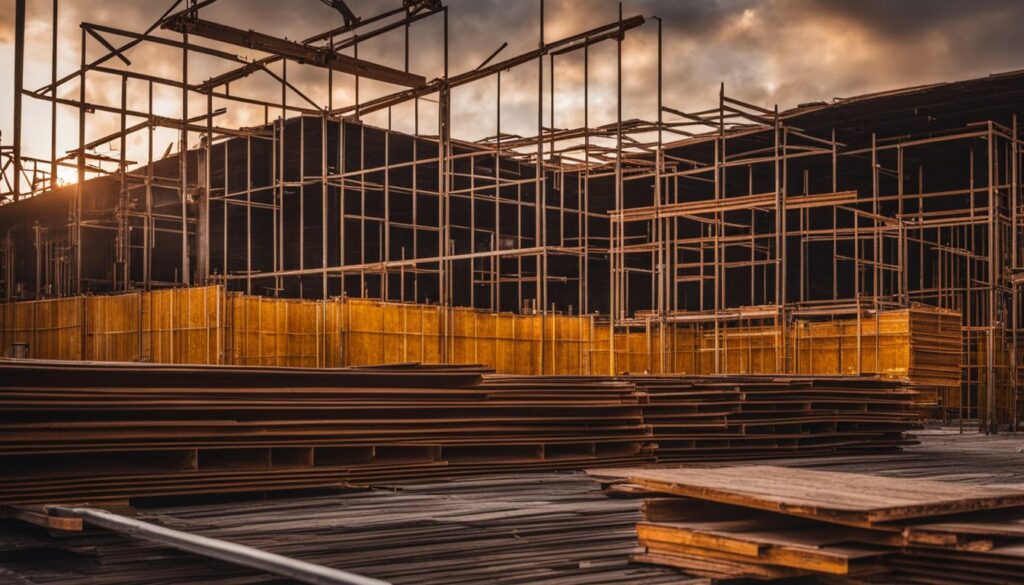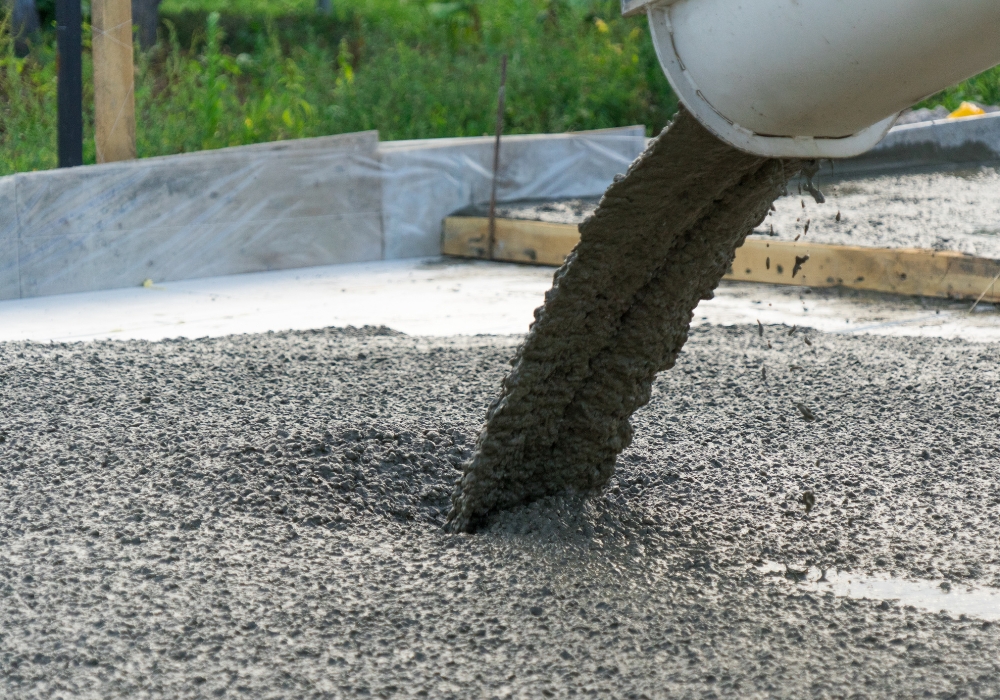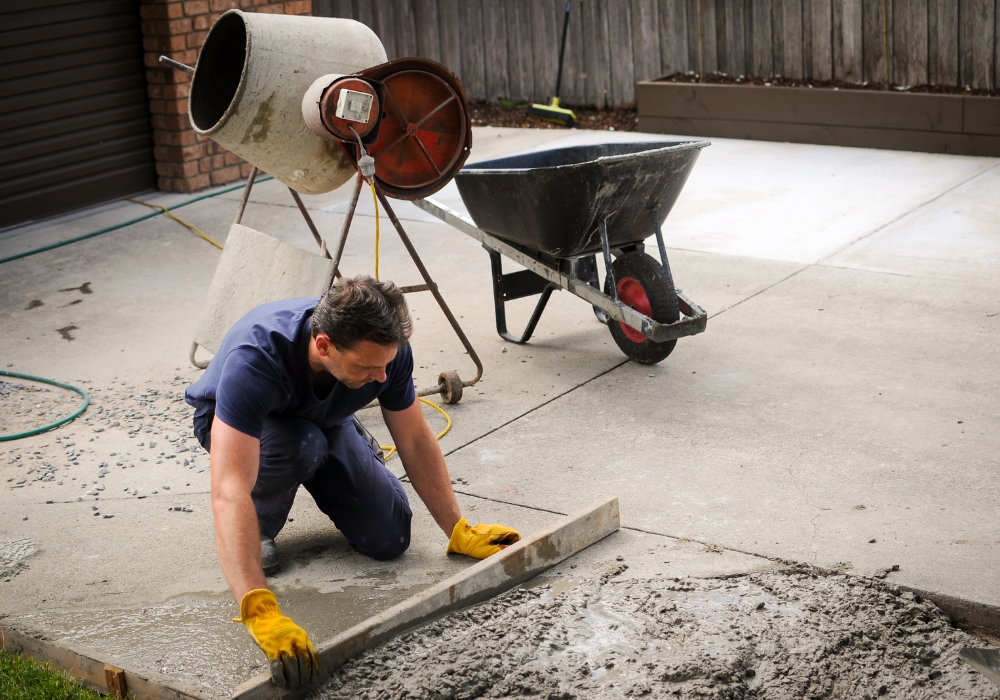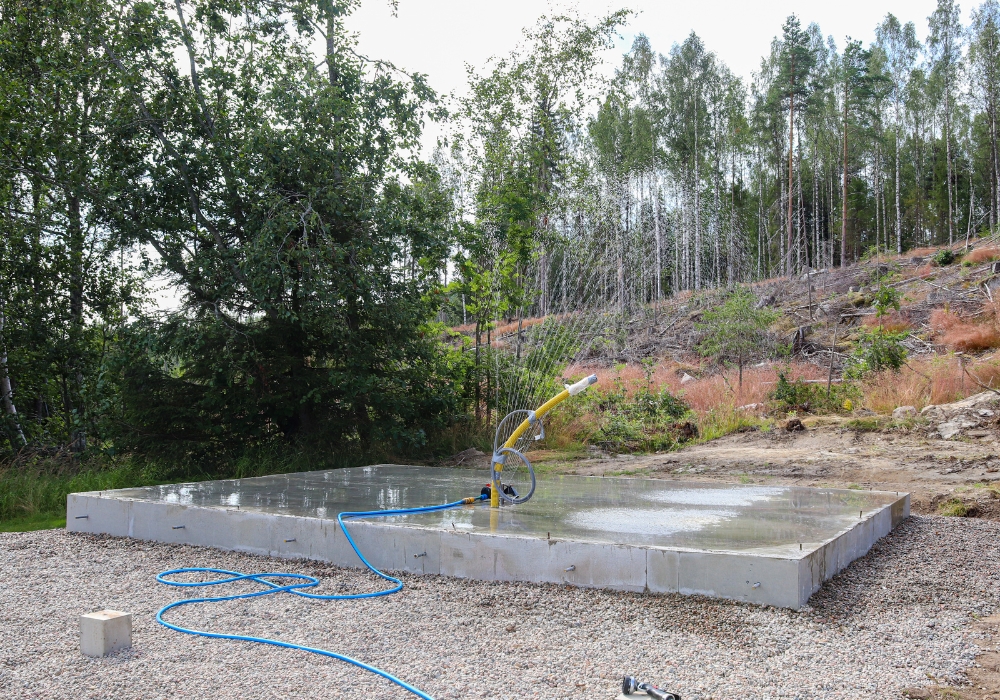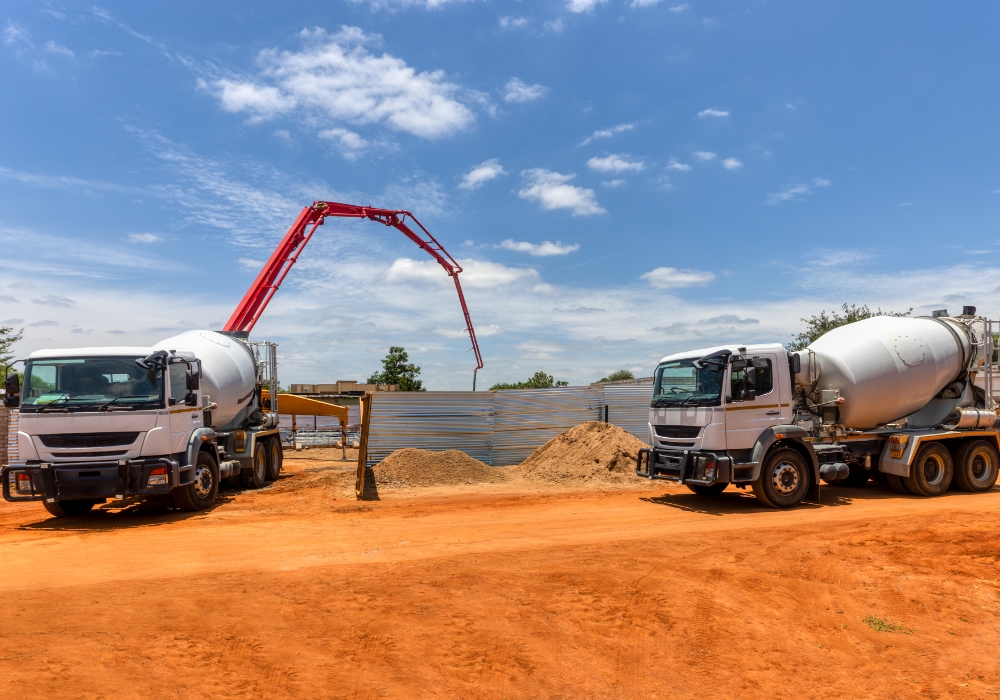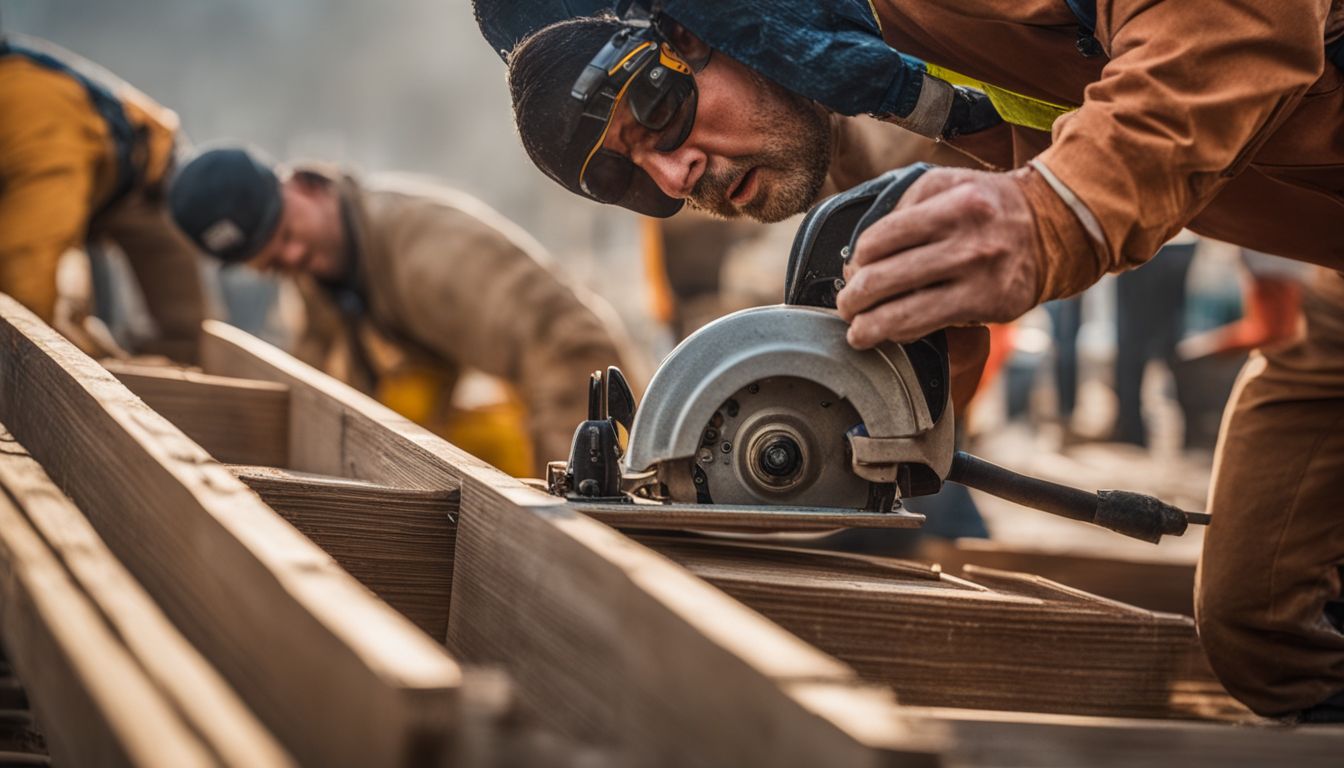
Struggling to get that flawless finish on your residential or commercial build? Yeah, we know the feeling all too well. In fact, did you realise that formwork can be the difference between a project that stands solid and one that’s merely okay in terms of both structure and looks? This article is packed with down-to-earth tips for nailing formwork in every project you tackle.
Time to step up your construction game, mate.
Understanding the Importance of Formwork in Construction
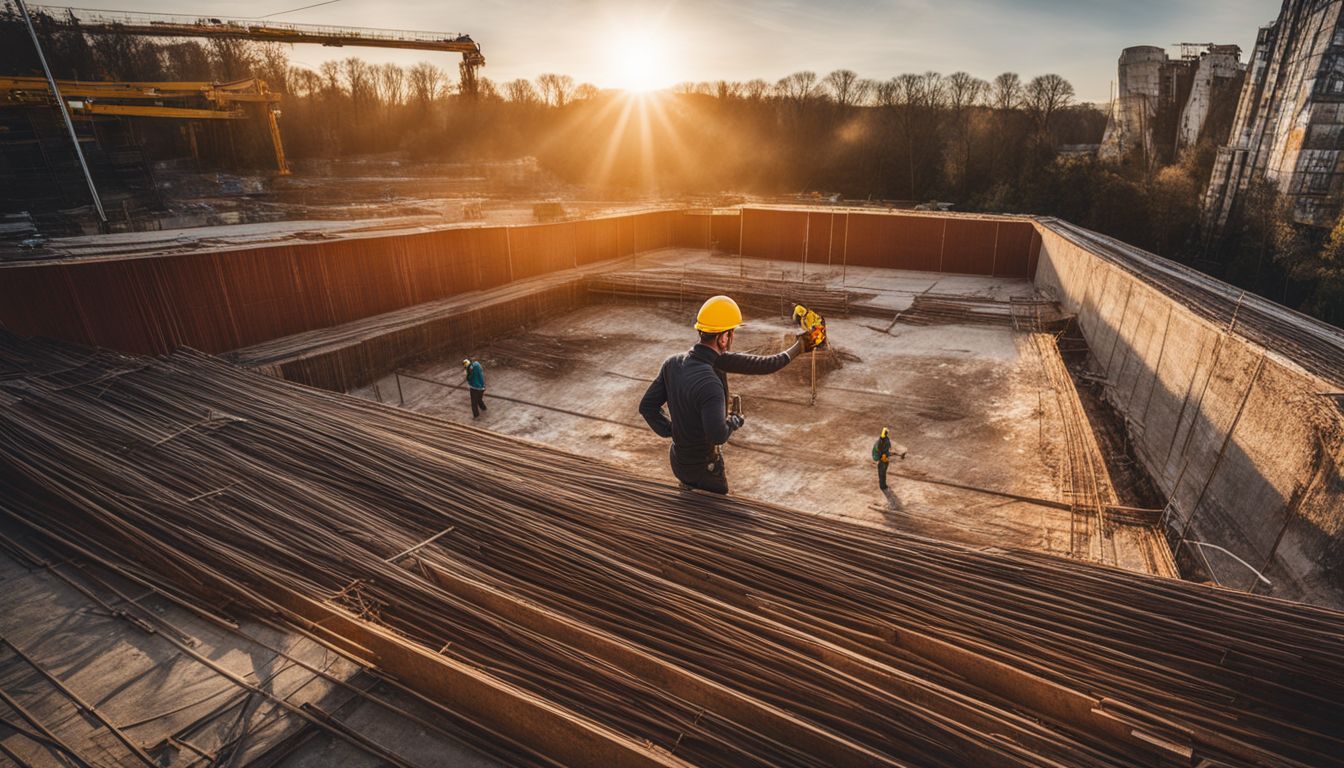
We all know that constructing a solid, durable building relies heavily on the concrete foundation and structure. That’s where formwork comes into play, acting as a temporary mould for the wet concrete until it hardens in the desired shape.
This process is crucial because it directly influences the quality, safety, and lifespan of any construction project. Whether we’re tackling residential housing construction work or massive commercial projects, mastering the art of formwork ensures our structures stand firm against nature’s challenges and time itself.
Properly designed formwork not only supports shaping concrete but also speeds up construction times by allowing simultaneous activities on-site. For business owners and homeowners alike, understanding this facet can significantly impact your project’s efficiency and overall success rate.
As we delve deeper into different types of formwork used across various projects next, keep in mind how these choices might affect your own construction goals.
Different Types of Formwork Used in Residential and Commercial Projects
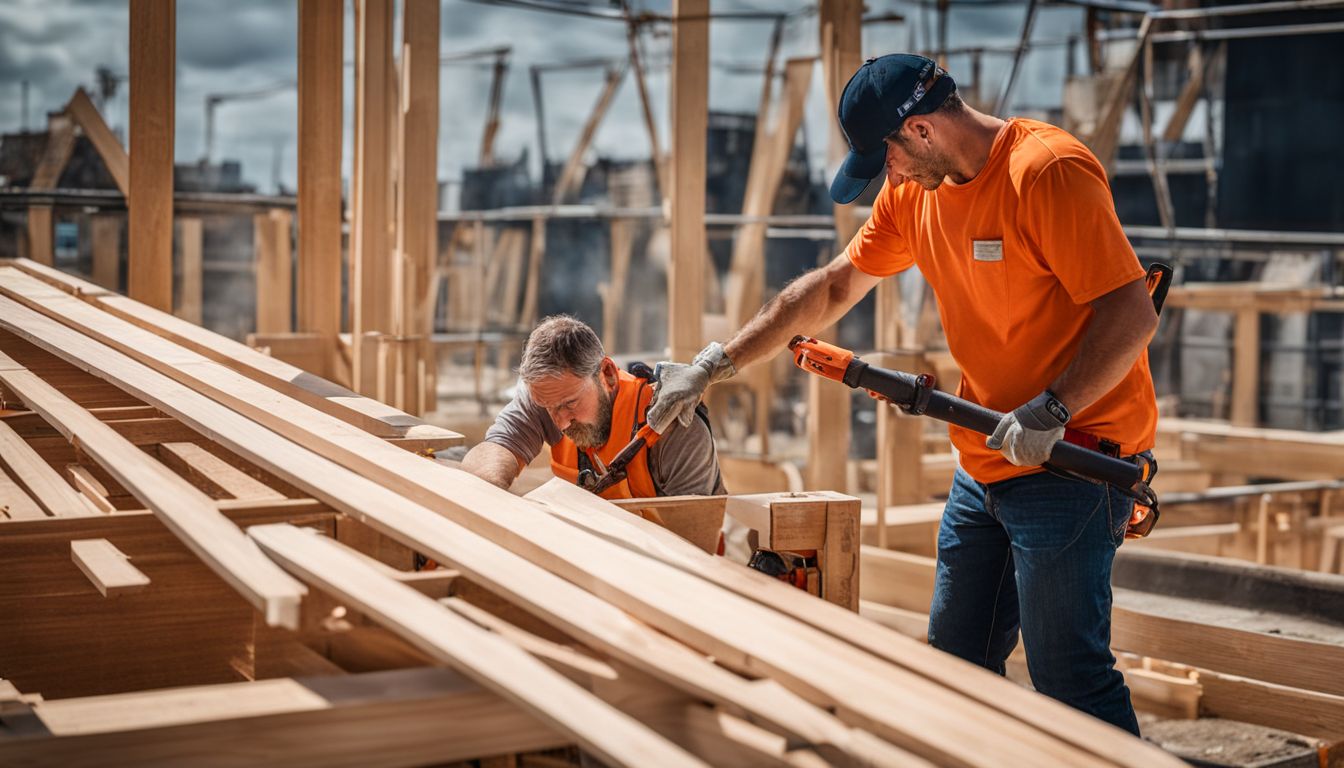
Timber, steel, and aluminium are common types of formwork used in residential and commercial projects. The choice depends on factors such as project duration, budget, and the desired surface finish.
Timber Formwork
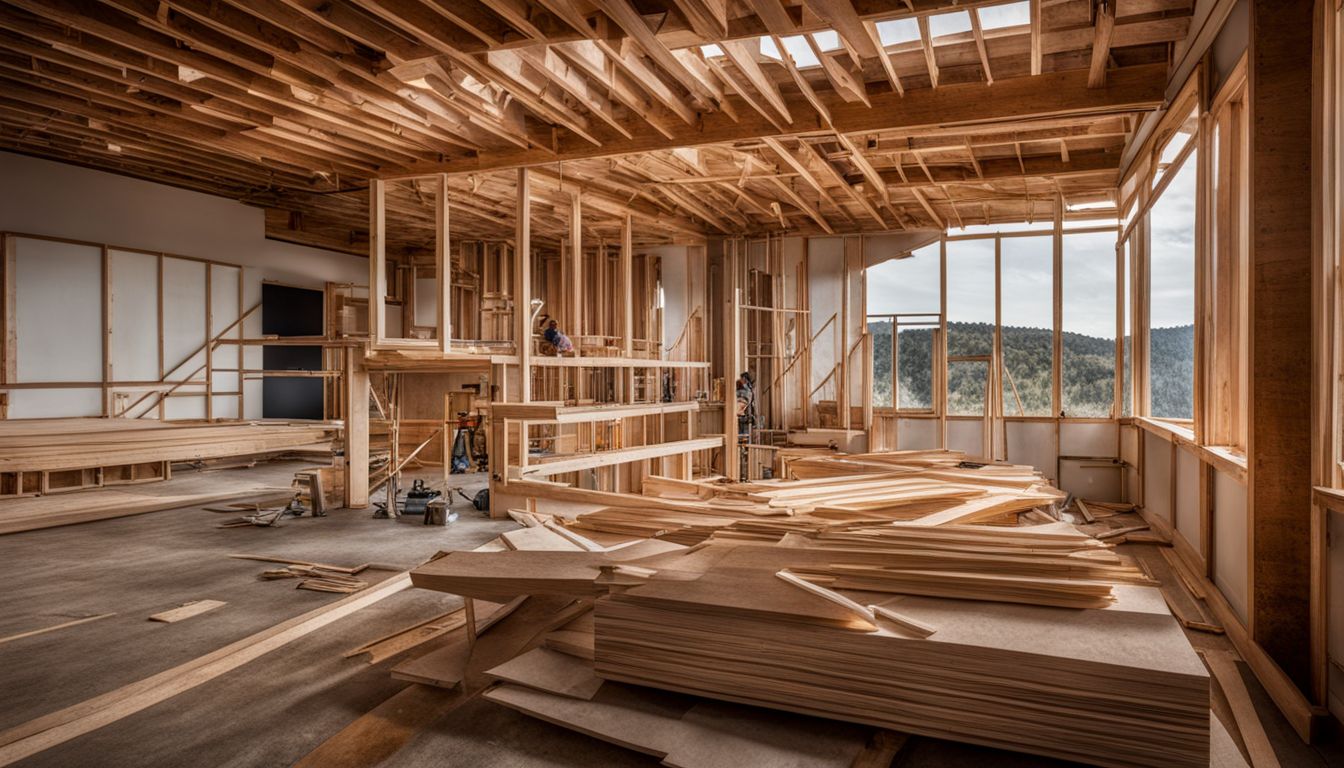
We often choose timber formwork for its versatility and cost-effectiveness, especially in residential projects. This type of formwork is particularly favoured for its ease of handling, cutting, and nailing.
The natural texture of wood provides an excellent surface finish to the concrete elements. Our teams carefully select high-quality timber to ensure strength and durability, making it an ideal choice for various building designs.
In constructing concrete structures, we pay close attention to the assembly and dismantling process of timber shuttering to maintain project timelines and budget control. Timber’s adaptability allows us to create specialised concrete features with precision.
Moving forward, we’ll explore how steel formwork plays a critical role in both residential and commercial constructions.
Steel Formwork
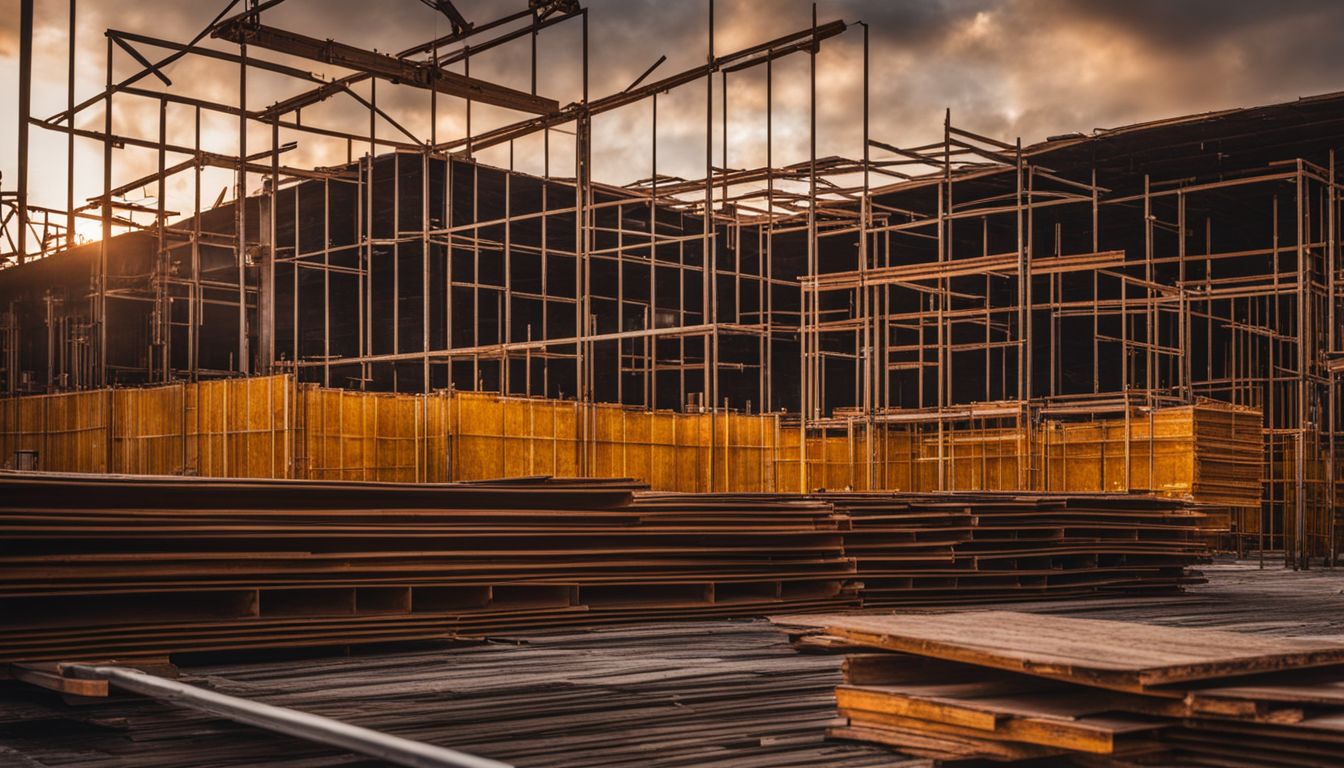
Steel formwork stands out for its strength, durability, and ability to be reused multiple times in different construction projects. This makes it a go-to choice for both residential and commercial ventures where the demand for sturdy and reliable structures is constant.
Unlike timber formwork, steel can withstand more weight and pressure, making it ideal for larger constructions.
We opt for steel formwork because it saves time on-site due to its easy assembly and disassembly features. Its smooth surface provides an excellent finish to concrete elements, reducing the need for further plastering or finishing work.
This efficiency not only speeds up construction timelines but also contributes to overall project cost savings.
Aluminium Formwork
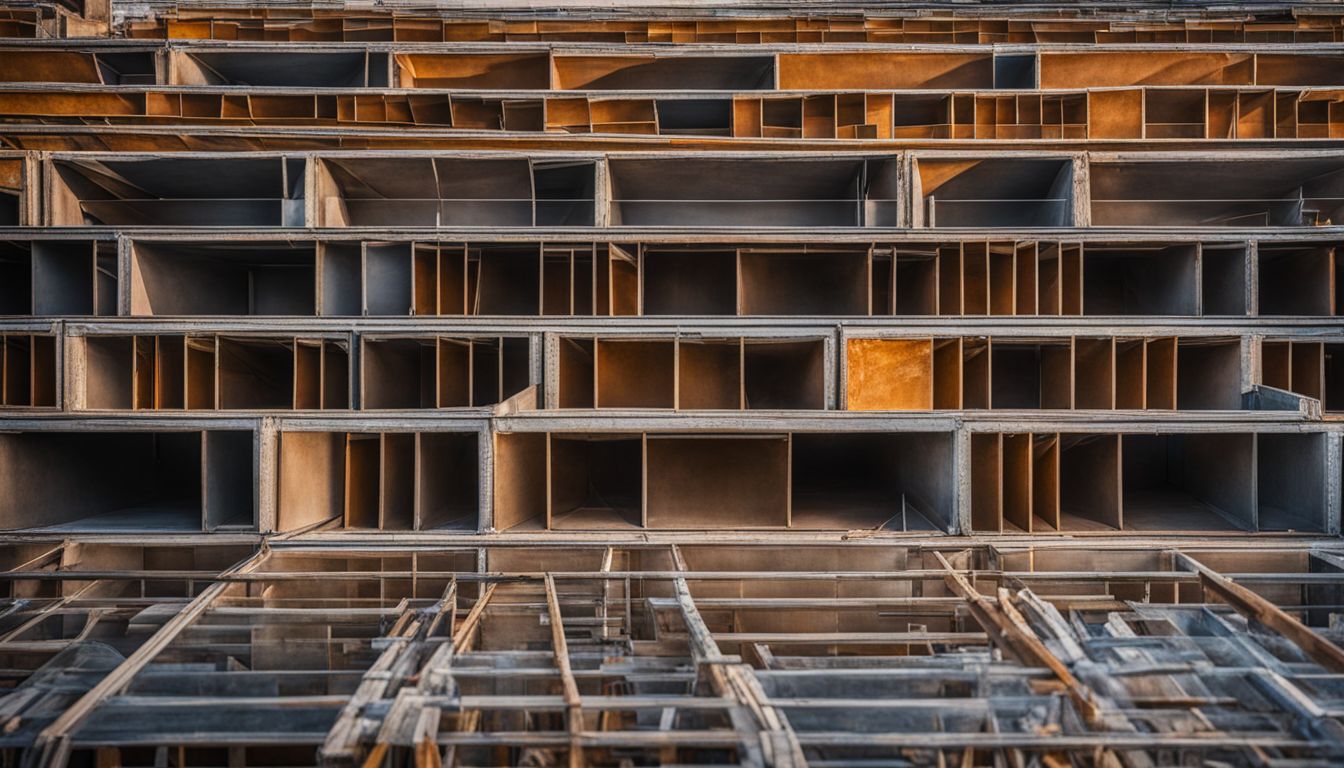
We use aluminium formwork in both residential and commercial projects for its remarkable advantages. This lightweight material allows quick assembly and disassembly, making the construction process faster and more efficient.
With aluminium formwork, we achieve a high-quality surface finish on concrete that often requires no further plastering. The durability of aluminium means it can be reused for numerous projects, offering a cost-effective solution for our clients.
Aluminium formwork stands out because of its adaptability to various architectural designs. Its precision ensures accurate dimensions, leading to better structural integrity in buildings we construct.
Transitioning from traditional methods to using aluminium formwork has revolutionised how we approach complex structures, ensuring we meet deadlines while maintaining excellence in every project layer.
Moving forward, let’s explore another critical aspect of construction – Cornerstones of Quality in Construction: Expert Formwork Systems.
Cornerstones of Quality in Construction: Expert Formwork Systems

Our team carefully selects and uses top-notch formwork systems to ensure the highest quality in residential and commercial projects. Expert formwork lays the foundation for structures that are not only visually appealing but also structurally sound, making it a critical aspect of construction.
Reliable scaffolding applications and precise shuttering techniques play pivotal roles in achieving this goal.
In crafting durable and aesthetically pleasing buildings, we prioritise aluminium, steel, and timber formwork based on project requirements. Each material offers unique benefits – aluminium is lightweight yet strong, steel supports heavy loads with ease, while timber provides flexibility for complex designs.
This strategic selection guarantees efficiency in construction practices and excellence in building design, meeting both business owners’ and homeowners’ expectations for quality workmanship.
Strategies for Effective Formwork in Retaining Walls and Specialty Concrete Features
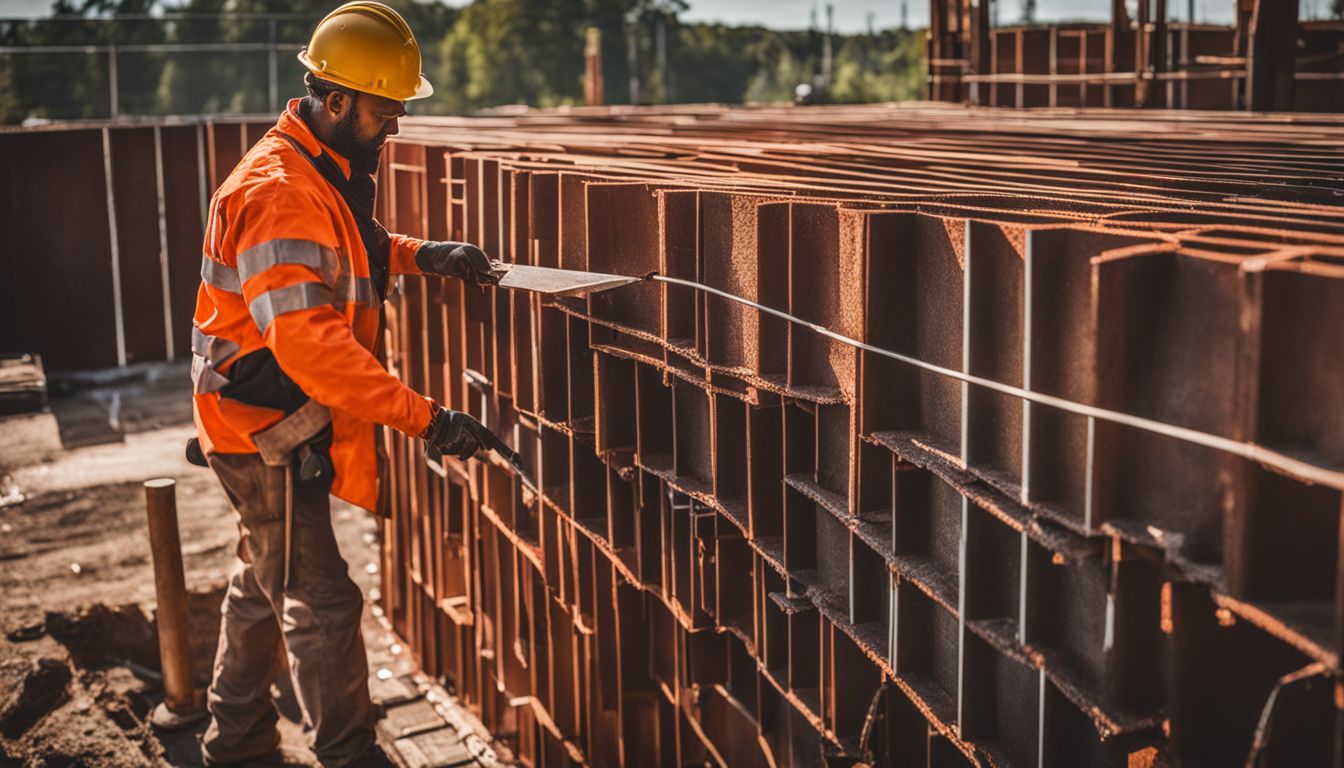
Formwork plays a pivotal role in shaping retaining walls and specialty concrete features within both residential and commercial projects. We understand the importance of getting it right from the start, ensuring that these structures not only fulfil their functional purpose but also contribute to the aesthetic appeal of any project.
- Select the appropriate formwork material:
Choosing between timber, steel, or aluminium formwork depends on the project’s specific requirements. Timber offers flexibility and cost-effectiveness for simpler projects. In contrast, steel and aluminium formwork provide superior strength and durability for more complex or larger scale constructions.
- Ensure precise measurements and design:
Accuracy in designing formwork systems is crucial for retaining walls and specialty concrete features. Detailed plans help in avoiding costly adjustments during construction, guaranteeing that all elements fit perfectly as intended.
- Utilise strong support systems:
Supporting scaffolding applications are essential to maintain stability while concrete sets into its designated shape. This practice prevents any unwanted movement that could compromise the structural integrity of retaining walls or intricate concrete features.
- Incorporate advanced construction technology:
Embracing digitalisation in formwork practices allows for more accurate planning and execution. Techniques such as 3D modelling enable us to visualise and adjust structural elements before physical work begins, enhancing overall efficiency.
- Adapt to climate change considerations:
Incorporating climate-resilient construction methods is becoming increasingly important. For instance, selecting materials that withstand extreme weather conditions ensures long-term durability of retaining walls and other concrete structures, reducing the need for frequent repairs or replacements.
By implementing these strategies, we pave the way towards achieving both efficiency and excellence in our construction processes involving specialised concrete elements.
The Impact of Formwork on Construction Efficiency and Excellence
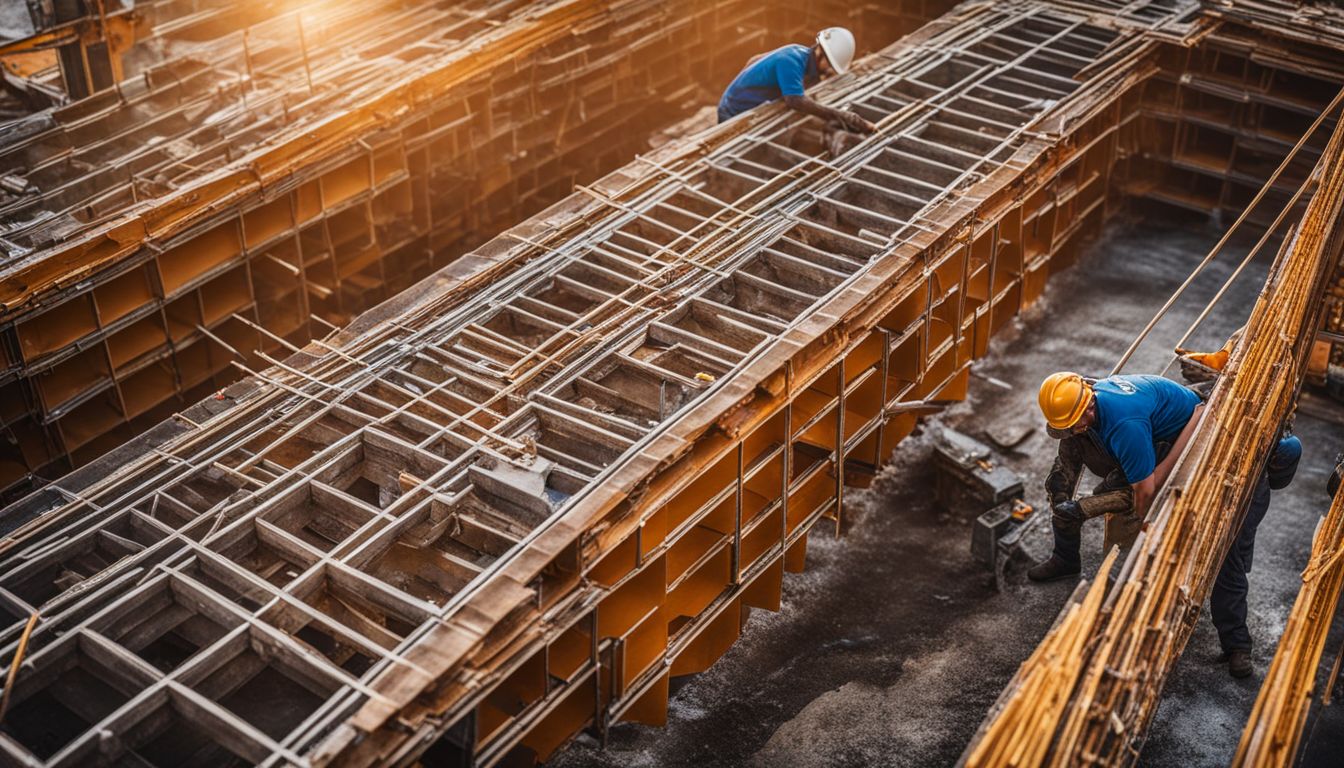
Moving on from the focused discussion on retaining walls and special concrete features, we now delve into how formwork significantly shapes construction efficiency and overall excellence.
Our projects stand as a testament to this truth. High-quality formwork systems streamline our building processes, cutting down the time needed for concrete to set properly. They ensure that deadlines are met without compromising safety or quality.
This is crucial for both residential and commercial projects where time equates to cost.
Our commitment to using advanced formwork solutions also elevates the standard of architectural beauty and structural integrity in every project we undertake. These systems allow us to craft complex designs with precision, resulting in buildings that not only meet but often surpass client expectations.
The flexibility offered by aluminium and steel formwork, for example, empowers us to construct unique features that enhance aesthetic appeal while maintaining durability. Through dedicated attention to effective formwork practices, we achieve outstanding results that reflect both construction efficiency and excellence.
The Role of Technology in Enhancing Formwork Practices
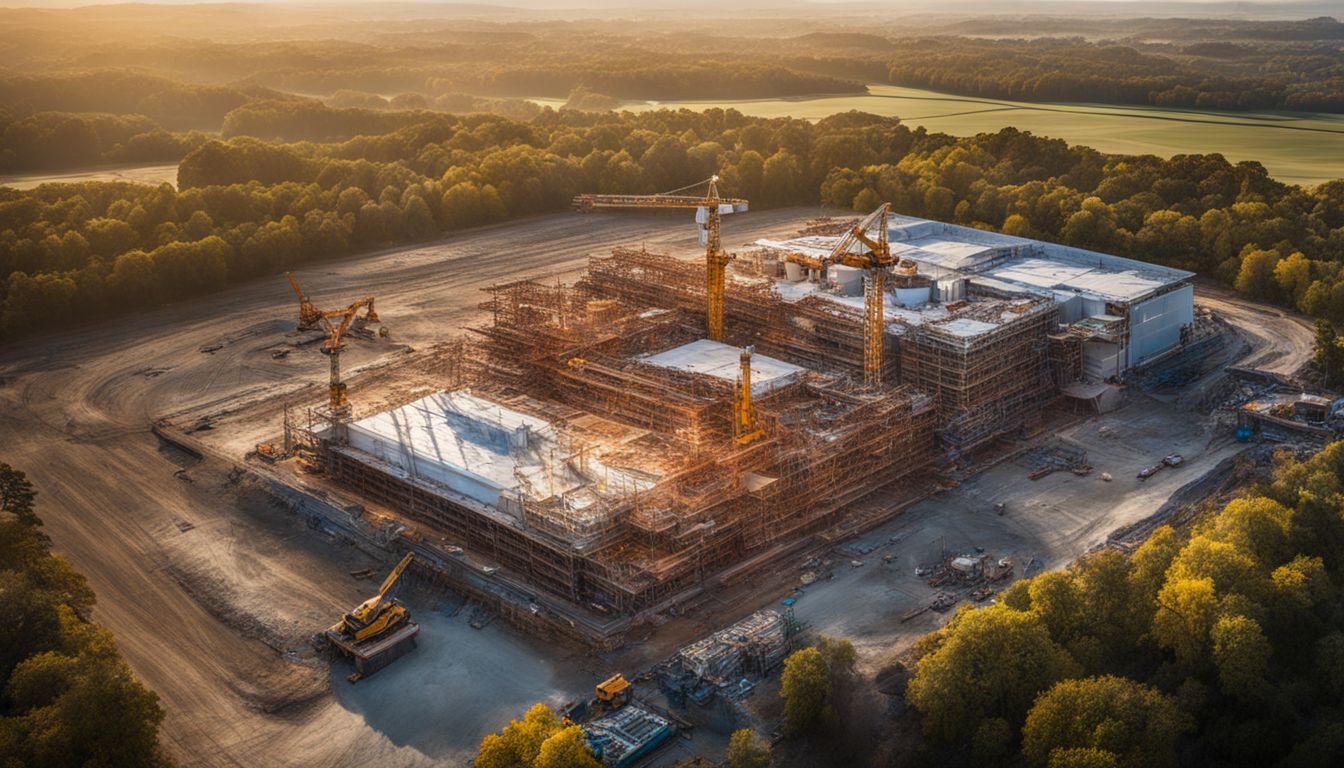
### 7. The Role of Technology in Enhancing Formwork Practices.
Technology plays a crucial role in revolutionising formwork practices, streamlining construction processes, and elevating efficiency. By integrating digital solutions such as BIM (Building Information Modelling) software and advanced 3D printing techniques, formwork design and production are optimised to meet specific project requirements, resulting in precise and high-quality concrete structures.
Automated robotics and AI-powered systems also enhance safety measures on site while expediting formwork assembly. These advancements empower construction professionals with the tools to deliver superior outcomes that align with sustainability goals.
Incorporating cutting-edge technology into formwork processes drives productivity and quality, setting new benchmarks for modern construction projects.
Conclusion
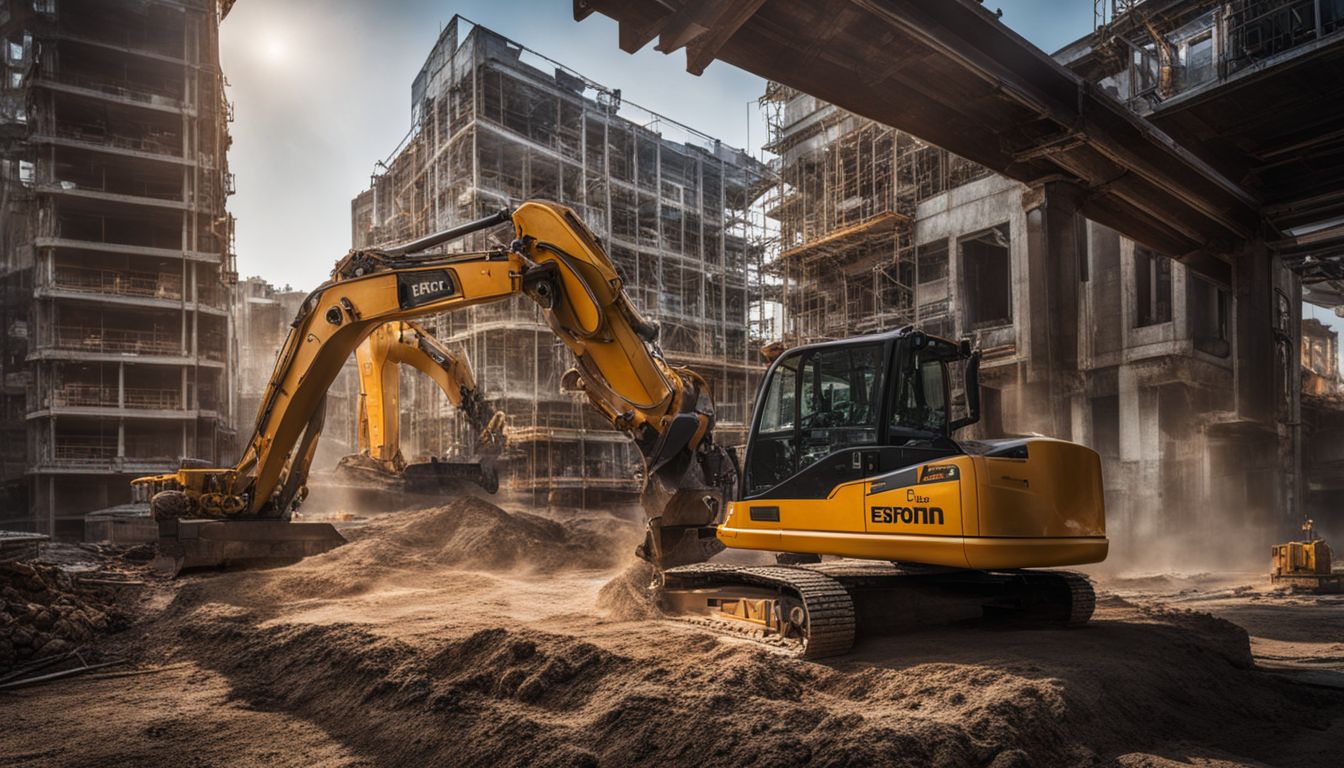
In conclusion, mastering formwork in residential and commercial projects is crucial for achieving excellence in construction projects. By understanding the importance of various formwork techniques such as timber, steel, and aluminium formwork, we can ensure sturdy and long-lasting structures.
Implementing expert formwork systems along with practical strategies for retaining walls and specialty concrete features guarantees efficient construction practices. Embracing technology to enhance formwork not only streamlines processes but also contributes to climate change adaptation.
Applying these approaches will undoubtedly lead to significant improvements in project management and building design. Let’s embark on this journey towards construction excellence with confidence!
